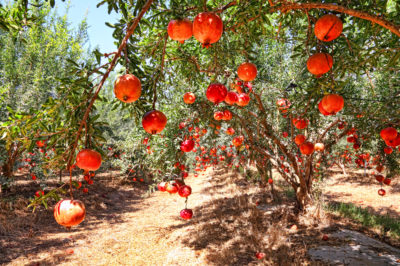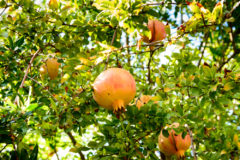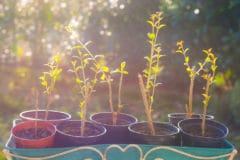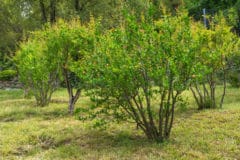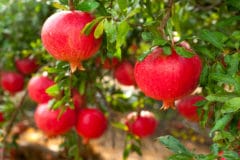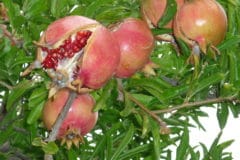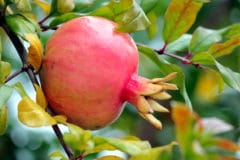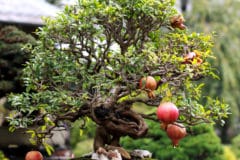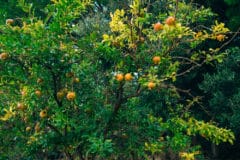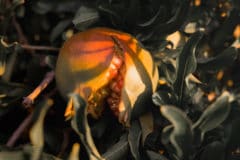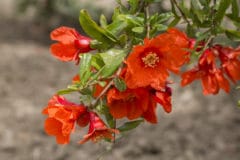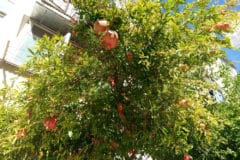Choosing Pomegranate Varieties
There are more than 500 pomegranate cultivars. Choose those that are recommended for your climate for best results. Among the possibilities:
- A.C. Sweet
- Ambrosia
- Angel Red
- Cloud
- Early Wonderful
- Eversweet
- Francis
- Granada
- Kashmir
- King
- Parfianka
- Pink Satin
- Red Silk
- Sharp Velvet
- Sweet
- Wonderful
Pomegranates on Soil
The soil on which you grow pomegranates need not have special qualities, with one exception. Pomegranates cannot tolerate wet feet and need soil that drains well. In their native habitat, the soil is poor and often rocky. You may need to amend your soil with coarse sand or fine gravel, especially if it is mostly clay.
Pomegranate Nutrients
Like all plants, pomegranates require certain nutrients to grow. Nitrogen and potassium are the two major nutrients needed for healthy plants and high fruit production. However, they also require phosphorus for proper root development. In addition, your pomegranates needs much smaller quantities of nutrients like magnesium, zinc and boron.
Pomegranates on Shrubs
Pomegranates are typically shrubby, with multiple trunks. You can use that to your advantage by training and pruning the plant to promote air circulation and balanced growth. It’s important to remember that the fruit can be heavy, especially as it gets closer to being ripe. Make sure those supporting branches can bear the weight of the fruit without breaking.
Pomegranates on Trees
Commercial growers typically train pomegranates to a single trunk. This makes it easier to spray dormant oil and helps ensure there is enough support to prevent branches from breaking under the weight of the fruit. Choose the best of the multiple branches and cut off the others. Prune off any suckers. Top the tree at the desired height.
Pomegranates on Bonsai
Pomegranates are a favorite bonsai specimen and if carefully managed, may even produce some fruit. The variety known as ‘Nana’ is a natural dwarf and rarely grows above three feet when not pruned. However, other varieties can also be used for bonsai. The fruit that results may be small and not particularly flavorful, but it is arresting on the bonsai specimen.
